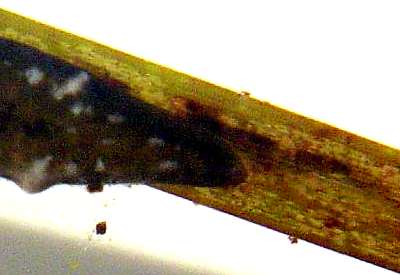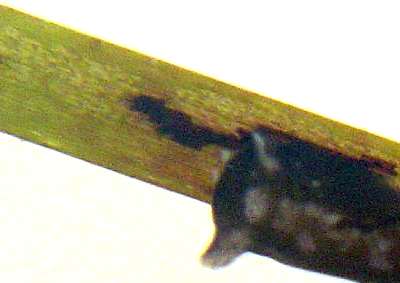Re: Elysia serca
March 15, 2004
From: Skip Pierce


Bill
Let me try to confuse this conversation a bit. I do not know Elysia serca other than by name. However, the pictures you recently posted [messages #12391, #12392] look to me like an elysiid that has lost it's symbiotic plastids and not fed in a while, at least not fed on the algae that is the plastid source. I think it is very likely that the color variation in this species (brown to green) is not due to more melanin in the brown slugs (actually it may not be melanin at all, but that's another story), but rather to fewer chloroplasts. It is also possible that the slug in the picture was not eating the Halodule blade - as you said, that is an unusual food source for Elysia spp - but may have been eating whatever was growing on the blade's surface - If it was eating anything at all. I still have no data on the issue, be as we continue to watch E. crispata in our aquaria, when they are not eating the plastid providing algae, I would not be surprised to learn that they are eating bacterial films or diatoms.
Skip
pierce@cas.usf.edu
Pierce, S.K., 2004 (Mar 15) Re: Elysia serca. [Message in] Sea Slug Forum. Australian Museum, Sydney. Available from http://www.seaslugforum.net/find/12446Hi Skip,
All contributions welcome - hopefully they will cause students to realise how little we know and inspire a few of them to look more deeply.
I agree they all look a bit 'empty' but I think Kathe Jensen was comparing them with the northern animal, Elysia catulus, which is very black. Concerning them feeding on sea grasses, I too was doubtful because I remember finding that Haminoea zelandiae, which was thought to feed on sea grasses, was in fact scraping the algal/diatom film off the leaves. I have included a couple of close-ups from Marina Poddubetskaia's photos #12393 which show quite noticeable scrape marks on the sea grass leaf. However these could have been made but something else. What I don't understand is how they do the scraping or feeding of any sort, as their tooth is still a typical piercing sacoglossan tooth. Both Elysia serca and Elysia catulus are usually found on sea grass leaves, which would suggest some sort of association. It is puzzling however that Marcus' original description of the species, from Brazil Marcus, 1955) notes 6 brown specimens from 'Phaeophycaea' [= brown algae] and 30 green ones from Ulva. Hosoe (1956) later reported that it fed on Ulva. However Kathe Jensen's studies (1983) showing that it prefers certain sea grasses seem pretty convincing, even if the ingested chloroplasts were not identified.
• Jensen, K.R. (1983) Further note on the ecology and systematics of Elysia serca Marcus (Opisthobranchia, Ascoglossa). Journal of Molluscan Studies, Suppl. 12A: 69-72.
It is certainly an interesting puzzle
Best wishes
Bill Rudman
Related messages
-
Re: Elysia serca
From: Kathe R. Jensen, March 22, 2004 -
Elysia serca from Bahamas - pale form
From: Marina Poddubetskaia, March 12, 2004 -
Elysia serca from Bahamas - dark form
From: Marina Poddubetskaia, March 12, 2004 -
Elysia serca from Bahamas - food plant
From: Marina Poddubetskaia, March 12, 2004
